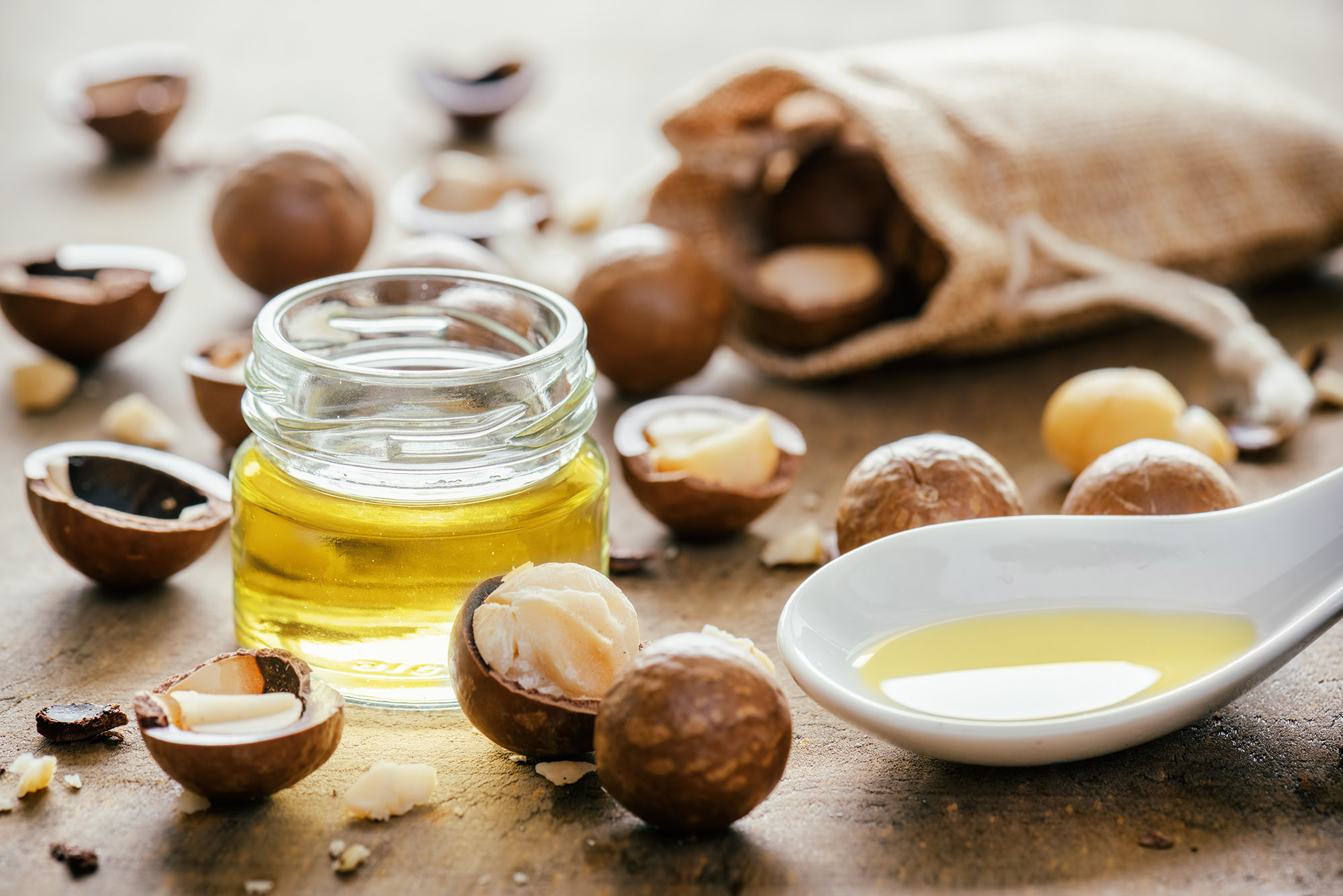Know Your Spectrum! The Other Omega Fats You May Not Know
Health | August 02, 2019
Most of us are familiar with omega fatty acids, specifically omega 3’s and 6’s. But did you know that the omega fats actually fall within a spectrum? And that there are other omega fats outside of 3 and 6? Today we’re going to cover these other types of omega fats that often don’t get discussed or are not given the recognition they deserve. So, if you’re curious to learn more about the “other” omegas and what they can do for your health, then read on and test your newfound knowledge with a friend when you’re done! Let’s get to it.
What Are Omegas Anyway?
Before we can cover the other omegas that I teased, let’s first establish whatan omega fat is. To put it simply, anytime you come across a fat that’s labeled as an omega, it means that the fat is first of all unsaturatedand contains either one or multipledouble bonds. Now, here’s where things get a bit sciency, so don’t worry if it sounds confusing. This is just for my fellow nerds out there. In order to differentiate say, an omega 3 fat from an omega 6 fat, you need to count the number of carbon atoms it has away from its double bonds. So, omega 3’s are three carbon atomsaway from their double bonds, with omega 6’s being six carbon atoms away from their double bonds- pretty straightforward. When it comes to other unsaturated fats like monounsaturated fats (MUFAs), it’s a tad bit different. These contain one double bond but can still contain a longer length of carbon atoms. As a spoiler for today’s post, these include omegas 7 and 9. Both are technically MUFAs but are still unsaturated and contain longer chains of carbon atoms. Their carbon chain lengths and number of double bonds contribute to how they affect the body. So, why is all of this important? Because these little differences all influence their various properties and effects for our wellbeing! Just because an omega 7 or 9 isn’t as widely spoken about does not mean it has no place in our health. They simply exert different effects due to their differences from the more popular omega 3’s and 6’s. [1]
But with that intro out of the way, let’s dive deeper into these “other” omegas!
Omega 5
This omega fat is really interesting because it is practically nonexistent in most diets. Omega 5 fatty acids are known either as trichosanic acidor punicic acidand are primarily found in pomegranate seeds (or rather, pomegranate seed oil) and, in rarer instances, snake gourd (a bitter vine plant that can be found in various international cuisines, particularly Indian and Southeast Asian). [2] [3] Although not as widely studied compared to the likes of omega 3’s and 6’s, omega 5 has moderate consistent research on its positive effects on cholesterol and triglycerides. [2] In one animal study, mice that were overfed a high-fat diet with a measly 1%of pomegranate seed oil had lower instances of weight gain compared to mice that were simply overfed a high-fat diet, with the researchers concluding that “…dietary PSO ameliorates high-fat diet induced obesity and insulin resistance in mice, independent of changes in food intake or energy expenditure.” [4] Up to 10-15% of punicic acid may be converted to conjugated linoleic acid (CLA), which is a fat found in (grass-fed) beef and dairy and safflower seed oil that has, perhaps controversially, been studied for its potential fat burning, cardiovascular, and anti-inflammatory capabilities. [5] Other research suggests it may have both antioxidant and anti-inflammatory properties, making it a beneficial dietary aid for preventing and supporting overall health. This is all the more important when it comes to conditions that are based on inflammation, such as inflammatory bowel disease (IBD), arthritis, diabetes, and heart disease. [6] [7] But once more, the research is still limited to animals and cells, so the jury is still out as to whether or not humans can completely reap the benefits.
Dig In: Load up on some punicic acid with my Arugula Salad with Pomegranate
Omega 7
Palmitoleic acid, or omega 7 fats, are a type of omega that can be found in salmon, anchovy, krill oil, olive oil, macadamia nuts and oil, and sea buckthorn oil. [8] Omega 7 fats can improve inflammation by acting as signaling molecules that communicate between the fat and muscle tissues inside the body, classifying them as lipokines. [9] And as lipokines, they can further affect the way our body uses and stores energy (aka, calories). Hence the reason behind the growing research on its influence towards metabolic syndrome, cardiovascular health, cholesterol, insulin resistance, inflammation, blood sugar, body fat, and obesity. [10] If you think this type of omega was meaningless, then consider this: the brains over at Harvard Medical School have gone so far as to apply a patent for it, so keep an eye out for any breakthroughs on this unique type of omega fat! [11]
Dig In:Get your dose of palmitoleic acid with my yummy Low Carb Macadamia Cookies
Omega 9
Finally, we’ve made it over to omega 9 fats, also known as oleic acid. This type of omega fat is actually right in front of our noses as being one of the most commonly consumed monounsaturated fatin our diet. Despite our body being able to produce oleic acid on its own (due to it being the most abundant type of fat in most of our cells), obtaining more from food has been shown to have its benefits. [12] One study tracing back as far as 1998 from the American Journal of Clinical Nutritionshows that in patients with diabetes, consuming a high, omega-9-rich diet lowered cholesterol, improved both glycemic control and blood sugar, and improved overall health. In fact, the study even concluded that these effects were advantageous for both type 1 and type 2 diabetes. [13] A similar study published in the journal Diabetes back in 2015 echoes these sentiments. Consuming plenty of omega-9 fats helped to improve adipose (belly) fat, blood sugar, fasting insulin, and insulin sensitivity. [14]
Oleic acid is pretty easy to obtain. You can find it in almonds, cashews, walnuts, olive oil, avocado oil, and peanut oil. [12]
Dig In:Make this refreshing Thai Cucumber Saladand enjoy the perks of oleic acid while you’re at it!
What do you think guys? Are you familiar with any of these omega fats? Let me know your thoughts below!
Sources:
[1] https://www.todaysdietitian.com/newarchives/040114p20.shtml
[2] https://examine.com/supplements/punicic-acid/
[3] Cyberlipid. “POLYENOIC FATTY ACIDS”. Retrieved 2007-01-11.
[4] https://www.ncbi.nlm.nih.gov/pubmed/21440024
[5] https://atpscience.com/pomegranate-seed-oil-clna/
[6] https://www.ncbi.nlm.nih.gov/pmc/articles/PMC5450373/
[7] https://www.researchgate.net/publication/283958848_Health_Benefits_of_Punicic_Acid_A_Review
[8] https://www.consumerlab.com/answers/do-i-need-to-take-omega-7-fatty-acids-if-i-take-fish-oil/omega-7-fatty-acids/
[9] Calder PC. Dietary modification of inflammation with lipids. Proc Nutr Soc. 2002 Aug;61(3):345-58.
[10] https://www.lifeextension.com/Magazine/2014/4/Omega-7-Protects-Against-Metabolic-Syndrome/Page-01
[11] Cao H, Hotamisligil G, Inventors; President and Fellows of Harvard College, Cambridge, MA, assignee. Fatty acid C16: 1N7-Palmitoleate a lipokine and biomarker for metabolic status. September 1, 2011.
[12] https://www.healthline.com/nutrition/omega-3-6-9-overview#section3
[13] https://www.ncbi.nlm.nih.gov/pubmed/9497173
[14] https://www.ncbi.nlm.nih.gov/pubmed/25626736
















Comments Add Comment
Add a Comment